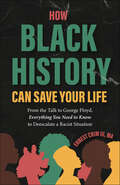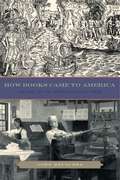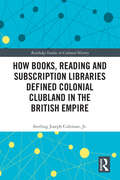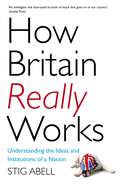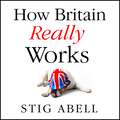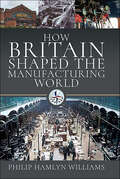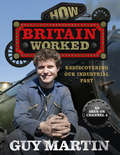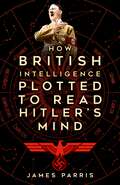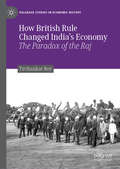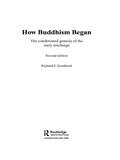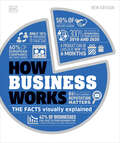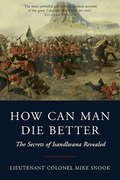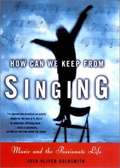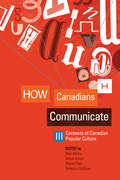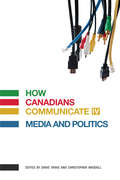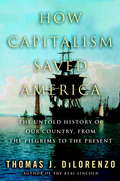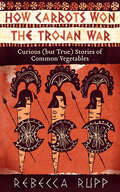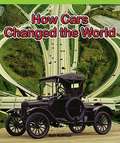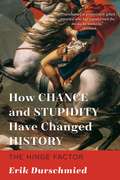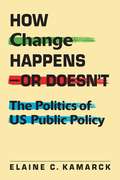- Table View
- List View
How Black History Can Save Your Life: Belonging at the Breaking Point
by Ernest Crim IIIBlack History's Power to Combat RacismHow Black History Can Save Your Life by Ernest Crim III, a hate crime survivor and Anti-Racist Educator, is an essential guide for anyone seeking to combat interpersonal racism, understand the roots of discrimination, and gain actionable strategies through Black historical narratives. This black history book for adults book empowers individuals, parents, and educators with tools to challenge racism and foster equity in their communities.Using Black history to fight racism. This book builds on Crim's personal experiences, including a viral 2016 hate crime incident that profoundly shaped his career. During a night out, Crim was targeted with racial slurs, but instead of letting it defeat him, he used the situation to highlight the pervasive nature of racism in America. He captured the moment on video, sparking a national conversation about the importance of confronting and addressing discrimination. Reclaiming the stories of Black history. Crim delves deep into the stories of Black excellence, resistance, and perseverance. He equips families, parents, and educators with the tools they need to combat racism in everyday life and within schools. Through his lens as a parent and former teacher, Crim demonstrates how the untold stories of Black history hold the keys to understanding the roots of racism and how it can be untaught. Drawing on his two bestsellers—Black History Saved My Life and The ABCs of Affirming Black Children—Crim teaches readers how to deconstruct racist systems and foster equitable practices in their communities. Inside, you&’ll find: Strategies to de-escalate and combat interpersonal racism in everyday situations. Tools for parents and educators to address racism in schools and educate children through an equitable lens. Inspiring Black history stories that provide a blueprint for resilience and empowerment in the face of discrimination. If you liked The Color of Law, Stamped from the Beginning, or Seven Sisters and a Brother, you&’ll love How Black History Can Save Your Life.
How Books Came to America: The Rise of the American Book Trade (Penn State Series in the History of the Book #17)
by John HruschkaAnyone who pays attention to the popular press knows that the new media will soon make books obsolete. But predicting the imminent demise of the book is nothing new. At the beginning of the twentieth century, for example, some critics predicted that the electro-mechanical phonograph would soon make books obsolete. Still, despite the challenges of a century and a half of new media, books remain popular, with Americans purchasing more than eight million books each day. In How Books Came to America, John Hruschka traces the development of the American book trade from the moment of European contact with the Americas, through the growth of regional book trades in the early English colonial cities, to the more or less unified national book trade that emerged after the American Civil War and flourished in the twentieth century. He examines the variety of technological, historical, cultural, political, and personal forces that shaped the American book trade, paying particular attention to the contributions of the German bookseller Frederick Leypoldt and his journal, Publishers Weekly.Unlike many studies of the book business, How Books Came to America is more concerned with business than it is with books. Its focus is on how books are manufactured and sold, rather than how they are written and read. It is, nevertheless, the story of the people who created and influenced the book business in the colonies and the United States. Famous names in the American book trade—Benjamin Franklin, Robert Hoe, the Harpers, Henry Holt, and Melvil Dewey—are joined by more obscure names like Joseph Glover, Conrad Beissel, and the aforementioned Frederick Leypoldt. Together, they made the American book trade the unique commercial institution it is today.
How Books Came to America: The Rise of the American Book Trade (Penn State Series in the History of the Book)
by John HruschkaAnyone who pays attention to the popular press knows that the new media will soon make books obsolete. But predicting the imminent demise of the book is nothing new. At the beginning of the twentieth century, for example, some critics predicted that the electro-mechanical phonograph would soon make books obsolete. Still, despite the challenges of a century and a half of new media, books remain popular, with Americans purchasing more than eight million books each day. In How Books Came to America, John Hruschka traces the development of the American book trade from the moment of European contact with the Americas, through the growth of regional book trades in the early English colonial cities, to the more or less unified national book trade that emerged after the American Civil War and flourished in the twentieth century. He examines the variety of technological, historical, cultural, political, and personal forces that shaped the American book trade, paying particular attention to the contributions of the German bookseller Frederick Leypoldt and his journal, Publishers Weekly.Unlike many studies of the book business, How Books Came to America is more concerned with business than it is with books. Its focus is on how books are manufactured and sold, rather than how they are written and read. It is, nevertheless, the story of the people who created and influenced the book business in the colonies and the United States. Famous names in the American book trade—Benjamin Franklin, Robert Hoe, the Harpers, Henry Holt, and Melvil Dewey—are joined by more obscure names like Joseph Glover, Conrad Beissel, and the aforementioned Frederick Leypoldt. Together, they made the American book trade the unique commercial institution it is today.
How Books, Reading and Subscription Libraries Defined Colonial Clubland in the British Empire (Routledge Studies in Cultural History #86)
by Sterling Joseph Coleman, Jr.How Books, Reading and Subscription Libraries Defined Colonial Clubland in the British Empire argues that within an entangled web of imperial, colonial and book trade networks books, reading and subscription libraries contributed to a core and peripheral criteria of clubbability used by the "select people"—clubbable settler elite—to vet the "proper sort"—clubbable indigenous elite—as they culturally, economically and socially navigated their way towards membership in colonial clubland. As a microcosm for British-controlled areas of the Caribbean, Asia and Africa, this book assesses the history, membership, growth and collection development of three colonial subscription libraries—the Penang Library in Malaysia, the General Library of the Institute of Jamaica and the Lagos Library in Nigeria—during the nineteenth and twentieth centuries. This work also examines the places these libraries occupied within the lives of their subscribers, and how the British Council reorganized these colonial subscription libraries to ensure their survival and the survival of colonial clubland in a post-colonial world. This book is designed to accommodate historians of Britain and its empire who are unfamiliar with library history, library historians who are unfamiliar with British history, and book historians who are unfamiliar with both topics.
How Britain Really Works: Understanding the Ideas and Institutions of a Nation
by Stig Abell'Absorbing . . . an intelligent and clear-eyed account of much that goes on in our country' Sunday TimesGetting to grips with Great Britain is harder than ever. We are a nation that chose Brexit, rejects immigration but is dependent on it, is getting older but less healthy, is more demanding of public services but less willing to pay for them, is tired of intervention abroad but wants to remain a global authority. We have an over-stretched, free health service (an idea from the 1940s that may not survive the 2020s), overcrowded prisons, a military without an evident purpose, an education system the envy of none of the Western world. How did we get here and where are we going?How Britain Really Works is a guide to Britain and its institutions (the economy, the military, schools, hospitals, the media, and more), which explains just how we got to wherever it is we are. It will not tell you what opinions to have, but will give you the information to help you reach your own. By the end, you will know how Britain works - or doesn't.'Stig Abell is an urbane, and often jaunty guide to modern Britain, in the mould of Bill Bryson' Irish Times
How Britain Really Works: Understanding the Ideas and Institutions of a Nation
by Stig Abell'Absorbing . . . an intelligent and clear-eyed account of much that goes on in our country' Sunday TimesGetting to grips with Great Britain is harder than ever. We are a nation that chose Brexit, rejects immigration but is dependent on it, is getting older but less healthy, is more demanding of public services but less willing to pay for them, is tired of intervention abroad but wants to remain a global authority. We have an over-stretched, free health service (an idea from the 1940s that may not survive the 2020s), overcrowded prisons, a military without an evident purpose, an education system the envy of none of the Western world. How did we get here and where are we going?How Britain Really Works is a guide to Britain and its institutions (the economy, the military, schools, hospitals, the media, and more), which explains just how we got to wherever it is we are. It will not tell you what opinions to have, but will give you the information to help you reach your own. By the end, you will know how Britain works - or doesn't.'Stig Abell is an urbane, and often jaunty guide to modern Britain, in the mould of Bill Bryson' Irish Times
How Britain Really Works: Understanding the Ideas and Institutions of a Nation
by Stig Abell'Absorbing . . . an intelligent and clear-eyed account of much that goes on in our country' Sunday Times'Wry and readable' GuardianGetting to grips with Great Britain is harder than ever. We are a nation that chose Brexit, rejects immigration but is dependent on it, is getting older but less healthy, is more demanding of public services but less willing to pay for them, is tired of intervention abroad but wants to remain a global authority. We have an over-stretched, free health service (an idea from the 1940s that may not survive the 2020s), overcrowded prisons, a military without an evident purpose, an education system the envy of none of the Western world. How did we get here and where are we going?How Britain Really Works is a guide to Britain and its institutions (the economy, the military, schools, hospitals, the media, and more), which explains just how we got to wherever it is we are. It will not tell you what opinions to have, but will give you the information to help you reach your own. By the end, you will know how Britain works - or doesn't.'Stig Abell is an urbane, and often jaunty guide to modern Britain, in the mould of Bill Bryson' Irish Times
How Britain Shaped the Manufacturing World, 1851–1951: 1851 - 1951
by Philip Hamlyn WilliamsThe peoples of the British Isles gave to the world the foundations on which modern manufacturing economies are built. This is quite an assertion, but history shows that, in the late eighteenth century, a remarkable combination of factors and circumstances combined to give birth to Britain as the first manufacturing nation. Further factors allowed it to remain top manufacturing dog well into the twentieth century while other countries were busy playing catch up. Through two world wars and the surrounding years, British manufacturing remained strong, albeit while ceding the lead to the United States. This book seeks to tell the remarkable story of British manufacturing, using the Great Exhibition of 1851 as a prism. Prince Albert and Sir Henry Cole had conceived an idea of bringing together exhibits from manufacturers across the world to show to its many millions of visitors the pre-eminence of the British. 1851 was not the start, but rather a pause for a bask in glory. This book traces back from the exhibits in Hyde Park’s Crystal Palace to identify the factors that gave rise to this pre-eminence, then follows developments up until the Festival of Britain exactly one century later. Steam power and communication by electric telegraph, both British inventions, predated the Exhibition. After it came the sewing machine and bicycle, motor car and aeroplane, but also electrical power, radio and the chemical and pharmaceutical industries where Britain played a leading part.
How Britain Worked
by Guy MartinIt is a largely forgotten fact that Britain was the first industrialized country in the world, but Guy Martin - the cult motorcycle racer and mechanic - is about to remind us how the industrial revolution helped make Britain great. Guy shows how the discoveries made in the late 18th-19th centuries are to thank for the ease of our every day lives: in order to cook a bacon and egg sandwich in Industrial-era conditions, Guy has to restore a steam locomotive and railway to have the components delivered to the local shop; he has to bring a saw mill back into working order to be able to make a bicycle; he has to revamp a Victorian fishing trawler so he can cook himself some fish and chips, and when he decides to mow the lawn, he restores a Victorian botanical garden. After all that, he's in need of a holiday - so he sets to work restoring a Victorian holiday resort. Illustrated throughout with specially commissioned photography as well as historical images, Guy will take us through each project; his passion, enthusiasm and sheer inventiveness bringing a completely new perspective to the Industrial Revolution. He invites us to live it with him, to enjoy the nostalgia, marvel in the mechanics and learn from its legacy.
How British Intelligence Plotted to Read Hitler's Mind: How British Intelligence Plotted to Read Hitler's Mind
by James ParrisIn the darkest days of the Second World War, as Europe fell under Nazi domination and Britain faced invasion, Louis de Wohl, a 36-year-old refugee from Germany, made a curious offer to British Intelligence. Based on the widely held belief that Hitler’s every action was guided by his horoscope, de Wohl claimed he could reveal precisely what advice the Führer’s astrologers were giving him.Rather than dismissing de Wohl out of hand as a crank, senior intelligence officers and chiefs of staff of the three armed services took him at his word. De Wohl was made an army captain and quartered in the Grosvenor House Hotel, from where his one-man ‘Psychological Research Bureau’ passed astrological readings and assessments to the War Office, before his deployment to the United States by the highly secret Special Operations Executive on a propaganda mission.Was it possible that Military and Naval intelligence officers could take the ancient and arcane practice of astrology seriously? Was de Wohl genuine or merely a charlatan? Did his astrological readings contribute to the downfall of Hitler and Nazi Germany?In How British Intelligence Plotted to Read Hitler’s Mind, the first fulllength study of Louis de Wohl, James Parris examines the evidence – including material from MI5, Military and Naval Intelligence files at the National Archives – and reaches remarkable conclusions about this bizarre aspect of the Second World War.
How British Rule Changed India’s Economy: The Paradox of the Raj (Palgrave Studies in Economic History)
by Tirthankar RoyThis Palgrave Pivot revisits the topic of how British colonialism moulded work and life in India and what kind of legacy it left behind. Did British rule lead to India’s impoverishment, economic disruption and famine? Under British rule, evidence suggests there were beneficial improvements, with an eventual rise in life expectancy and an increase in wealth for some sectors of the population and economy, notably for much business and industry. Yet many poor people suffered badly, with agricultural stagnation and an underfunded government who were too small to effect general improvements. In this book Roy explains the paradoxical combination of wealth and poverty, looking at both sides of nineteenth century capitalism. Between 1850 and 1930, India was engaged in a globalization process not unlike the one it has seen since the 1990s. The difference between these two times is that much of the region was under British colonial rule during the first episode, while it was an independent nation state during the second. Roy's narrative has a contemporary relevance for emerging economies, where again globalization has unleashed extraordinary levels of capitalistic energy while leaving many livelihoods poor, stagnant, and discontented.
How Buddhism Began: The Conditioned Genesis of the Early Teachings (Jordan Lectures In Comparative Religion Ser. #No. 17)
by Richard F. GombrichWritten by one of the world's top scholars in the field of Pali Buddhism, this new and updated edition of How Buddhism Began, discusses various important doctrines and themes in early Buddhism. It takes 'early Buddhism' to be that reflected in the Pali canon, and to some extent assumes that these doctrines reflect the teachings of the Buddha himself. Two themes predominate. Firstly, the author argues that we cannot understand the Buddha unless we understand that he was debating with other religious teachers, notably Brahmins. The other main theme concerns metaphor, allegory and literalism. This accessible, well-written book is mandatory reading for all serious students of Buddhism.
How Buildings Learn
by Stewart BrandBuildings have often been studies whole in space, but never before have they been studied whole in time. How Buildings Learn is a masterful new synthesis that proposes that buildings adapt best when constantly refined and reshaped by their occupants, and that architects can mature from being artists of space to becoming artists of time. From the connected farmhouses of New England to I.M. Pei's Media Lab, from "satisficing" to "form follows funding," from the evolution of bungalows to the invention of Santa Fe Style, from Low Road military surplus buildings to a High Road English classic like Chatsworth--this is a far-ranging survey of unexplored essential territory. More than any other human artifacts, buildings improve with time--if they're allowed to. How Buildings Learn shows how to work with time rather than against it.
How Buildings Learn
by Stewart BrandBuildings have often been studies whole in space, but never before have they been studied whole in time. How Buildings Learn is a masterful new synthesis that proposes that buildings adapt best when constantly refined and reshaped by their occupants, and that architects can mature from being artists of space to becoming artists of time.From the connected farmhouses of New England to I.M. Pei's Media Lab, from "satisficing" to "form follows funding," from the evolution of bungalows to the invention of Santa Fe Style, from Low Road military surplus buildings to a High Road English classic like Chatsworth-this is a far-ranging survey of unexplored essential territory.More than any other human artifacts, buildings improve with time-if they're allowed to. How Buildings Learn shows how to work with time rather than against it.
How Business Works (DK How Stuff Works)
by DKLearn the essentials of business, finance, and company management with this unique graphic guide from DK!If you're perplexed by profit margins, confused by cash flow, or baffled by balance sheets, all your questions and many more are answered in this indispensable business book. Get to grips with how companies work, from research and development, to sales and marketing, and production and distribution.Eye-catching visual aids give a helpful representation of each and every aspect of business, while complex subjects are broken down into concise explanations, expressed in easy-to-understand language. Crammed with essential terms and key concepts, How Business Works is perfect for anyone looking to take their business to the next level, or those learning the ropes from the ground to the top.Within this one-stop guide you will find:-Hundreds of colorful images and engaging graphics.-Demystifying explanations of complex theories and financial jargon.-Up-to-date guidance on remote and flexible business strategies.-Comprehensive information about international business practice, equipping you with the skills to tackle the global marketplace.Whether you're launching a startup, having trouble managing stakeholder relationships, or simply interested in all things business, you wont find a more comprehensive guide than this! Much more than a standard business management or self help book, How Business Works shows you what other titles only tell you, combining solid reference with no-nonsense advice.Having trouble adjusting to our working from home business culture? This new and improved edition includes the latest tips and techniques to help you stay motivated and achieve the best possible results while working remotely.Reach new heights of personal development!Take your learning to the next level with How Management Works and How to Start Your Own Business - the perfect learning companions to accompany this practical business reference book. Want to stretch your brain even further? Discover DK's extremely successful How ... works series, a curated collection of more than a dozen graphic reference books covering topics from psychology, to technology and music, and many more!
How Can Burundi Raise Its Growth Rate?
by Olivier BasdevantA report from the International Monetary Fund.
How Can Man Die Better: The Secrets of Isandlwana Revealed
by Mike SnookWednesday 22 January 1879 was one of the most dramatic days in the long and distinguished history of the British Army. At noon a massive Zulu host attacked the 24th Regiment in its encampment at the foot of the mountain of Isandlwana, a distinctive feature that bore an eerie resemblance to the Sphinx badge of the outnumbered redcoats. Disaster ensued. Later that afternoon the victorious Zulus would strike the tiny British garrison at Rorkes Drift. How Can Man Die Better is a unique analysis of Isandlwana of the weapons, tactics, ground, and the intriguing characters who made the key military decisions. Because the fatal loss was so high on the British side there is still much that is unknown about the battle. This is a work of unparalleled depth, which eschews the commonly held perception that the British collapse was sudden and that the 24th Regiment was quickly overwhelmed. Rather, there was a protracted and heroic defence against a determined and equally heroic foe. The author reconstructs the final phase of the battle in a way that has never been attempted before. It was to become the stuff of legend, which brings to life so vividly the fear and smell the blood.
How Can We Keep from Singing: Music and the Passionate Life
by Joan Oliver GoldsmithThe author has been a member of the Minneapolis/St. Paul Symphony Chorus for eight years, and has a lifelong love of choral singing. This book combines memoir with far-ranging reflections on singing, friendship, the corporate world, romantic love, and much more. Goldsmith writes beautifully and her words capture the beauty and exhilaration of singing, which she considers a spiritual experience.
How Canadians Communicate III
by Bart Beaty Derek Briton Gloria FilaxContexts of Canadian Popular Culture
How Canadians Communicate IV: Media and Politics
by David Taras Christopher WaddellSubstantial changes have occurred in the nature of political discourse over the past thirty years. Once, traditional media dominated the political landscape, but in recent years Facebook, Twitter, blogs and Blackberrys have emerged as important tools and platforms for political campaigns. While the Canadian party system has proved surprisingly resilient, the rhythms of political life are now very different. A never-ending 24-hour news cycle has resulted in a never-ending political campaign. The implications of this new political style and its impact on political discourse are issues vigorously debated in this new volume of How Canadians Communicate, as is the question on every politician’s mind: How can we draw a generation of digital natives into the current political dialogue? With contributions from such diverse figures as Elly Alboim, Richard Davis, Tom Flanagan, David Marshall, and Roger Epp, How Canadians Communicate IV is the most comprehensive review of political communication in Canada in over three decades – one that poses questions fundamental to the quality of public life.
How Capitalism Saved America: The Untold History of Our Country from the Pilgrims to the Present
by Thomas J. DilorenzoWhether it's Michael Moore or the New York Times, Hollywood or academia, a growing segment in America is waging a war on capitalism. We hear that greedy plutocrats exploit the American public; that capitalism harms consumers, the working class, and the environment; that the government needs to rein in capitalism; and on and on. Anticapitalist critiques have only grown more fevered in the wake of corporate scandals like Enron and WorldCom. Indeed, the 2004 presidential campaign has brought frequent calls to re-regulate the American economy. But the anticapitalist arguments are pure bunk, as Thomas J. DiLorenzo reveals in How Capitalism Saved America. DiLorenzo, a professor of economics, shows how capitalism has made America the most prosperous nation on earth--and how the sort of government regulation that politicians and pundits endorse has hindered economic growth, caused higher unemployment, raised prices, and created many other problems. He propels the reader along with a fresh and compelling look at critical events in American history--covering everything from the Pilgrims to Bill Gates. And just as he did in his last book, The Real Lincoln, DiLorenzo explodes numerous myths that have become conventional wisdom. How Capitalism Saved America reveals: * How the introduction of a capitalist system saved the Pilgrims from starvation * How the American Revolution was in large part a revolt against Britain's stifling economic controls * How the so-called robber barons actually improved the lives of millions of Americans by providing newer and better products at lower prices * How the New Deal made the Great Depression worse * How deregulation got this country out of the energy crisis of the 1970s--and was not the cause of recent blackouts in California and the Northeast * And much more How Capitalism Saved America is popular history at its explosive best.
How Carrots Won the Trojan War: Curious (but True) Stories of Common Vegetables
by Rebecca RuppDiscover why Roman gladiators were massaged with onion juice before battle, how celery contributed to Casanova’s conquests, how peas almost poisoned General Washington, and why some seventeenth-century turnips were considered degenerate. Rebecca Rupp tells the strange and fascinating history of 23 of the world’s most popular vegetables. Gardeners, foodies, history buffs, and anyone who wants to know the secret stories concealed in a salad are sure to enjoy this delightful and informative collection.
How Cars Changed The World
by Kurt HoffmanBright, full-color and black and white historic photographs compare and contrast the cars, roads, and travel experiences of today with those of days gone by. Strongly correlated to the Common Core Standards for Informational Text, this title is perfect for exploring the relationships between a series of historical events and scientific ideas.
How Chance and Stupidity Have Changed History: The Hinge Factor
by Erik DurschmiedFrom the Trojan Horse to a photograph snapped in Vietnam, world history has been shaped as much by chance and error as by courage and heroism. Despite impossible odds, invincible armies fall in bitter defeat to weaker opponents. How and why does this happen? What decides the fate of battle? In this fascinating book, Erik Durschmied takes us through the major conflicts of history-from Agincourt to the Civil War, from Crimea to the Gulf War-and reveals how, in war, it is the improbable and the inconceivable that determine events.Writing with the style and flair that made him an award-winning war correspondent, Durschmied explores the fistful of nails that could have won Waterloo for Napoleon; the barrel of schnapps that proved disastrous for an Austrian emperor; and the three cigars that changes the course of Antietam; and many other instances when chance decided history’s path. Conflicts are decided by the caprice of weather, erroneous intelligence, unlikely heroism, strange coincidence, or individual incompetence-in short, by the unpredictable "hinge factor.”Skyhorse Publishing, as well as our Arcade imprint, are proud to publish a broad range of books for readers interested in history--books about World War II, the Third Reich, Hitler and his henchmen, the JFK assassination, conspiracies, the American Civil War, the American Revolution, gladiators, Vikings, ancient Rome, medieval times, the old West, and much more. While not every title we publish becomes a New York Times bestseller or a national bestseller, we are committed to books on subjects that are sometimes overlooked and to authors whose work might not otherwise find a home.
How Change Happens--or Doesn't: The Politics of US Public Policy
by Elaine C. KamarckHow do transformative changes in public policy take place? Why do some issues rise to the top of the political agenda, while others are completely ignored? What makes some major policy initiatives succeed―at times, even when the odds are decidedly against them―while others fail or languish for decades? Answering those questions is the purpose of this book. Elaine Kamarck traces the paths of a series of modern policy initiatives from the orderly world of analysis to the messy world of partisan politics. Dissecting the reasons for policy success and failure, she offers an intriguing new perspective on how change happens in the space where politics and policy overlap.
